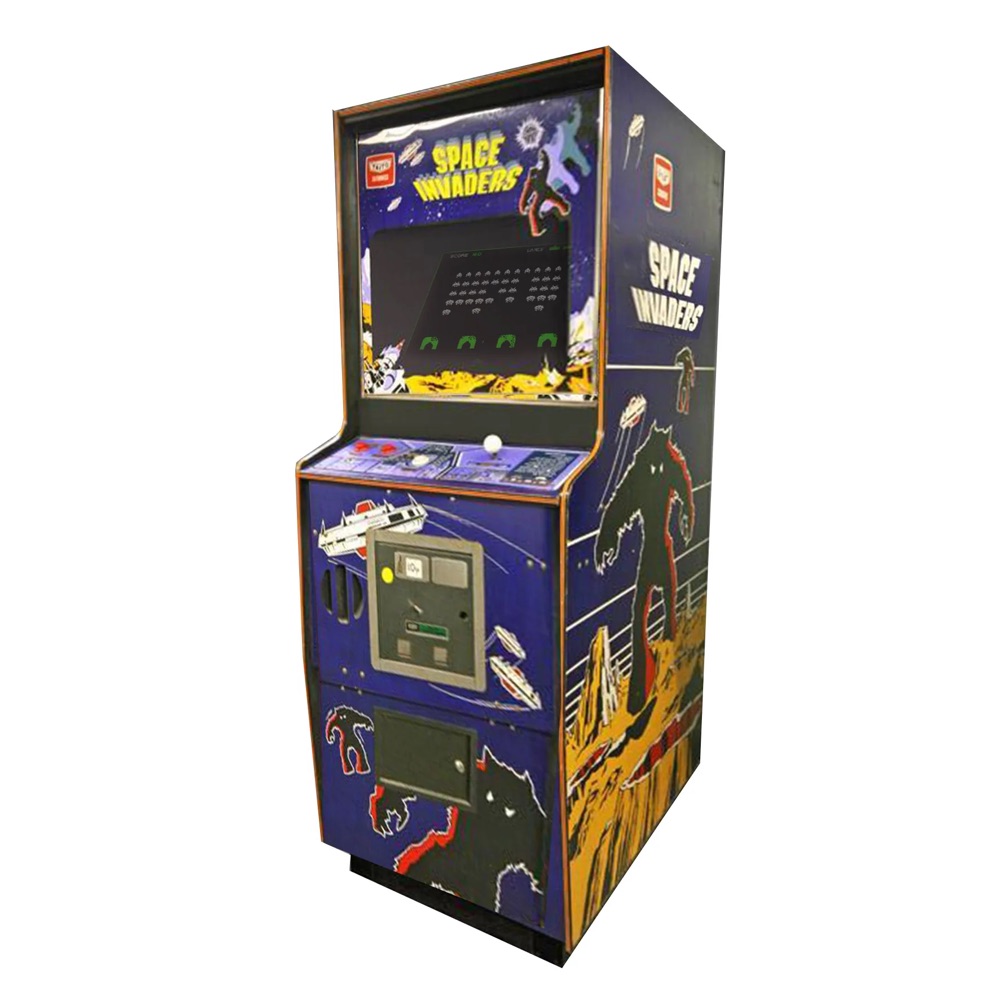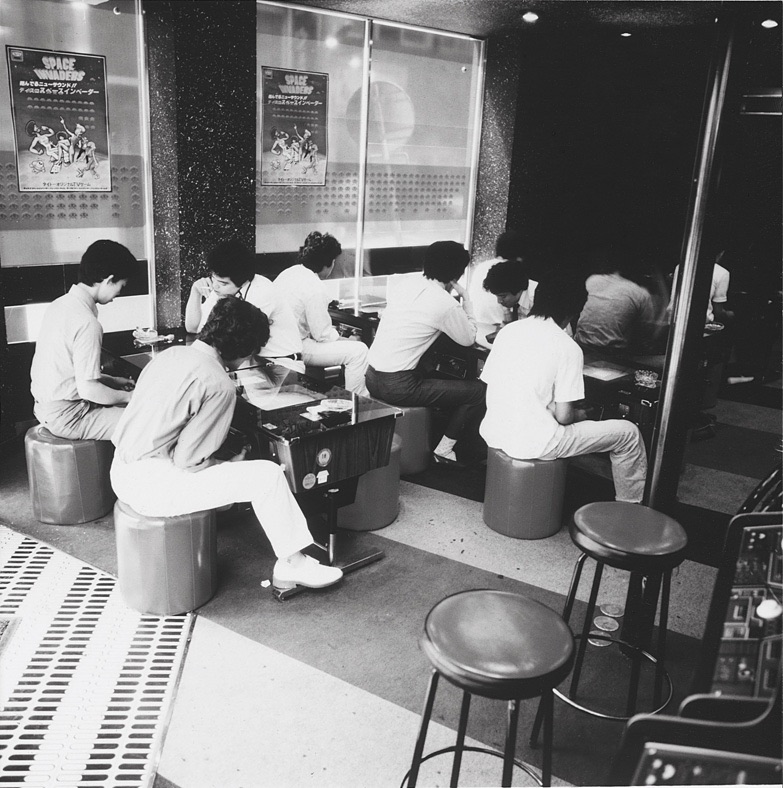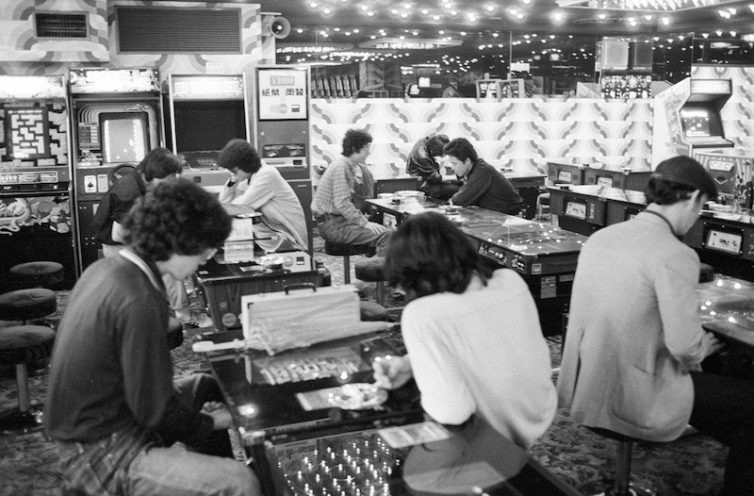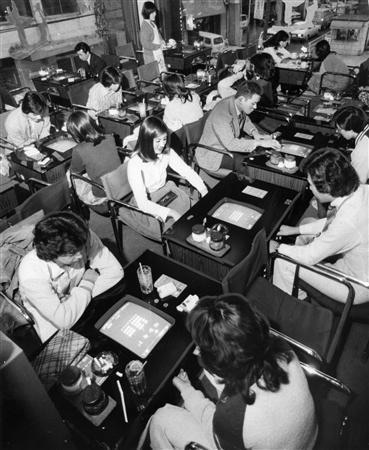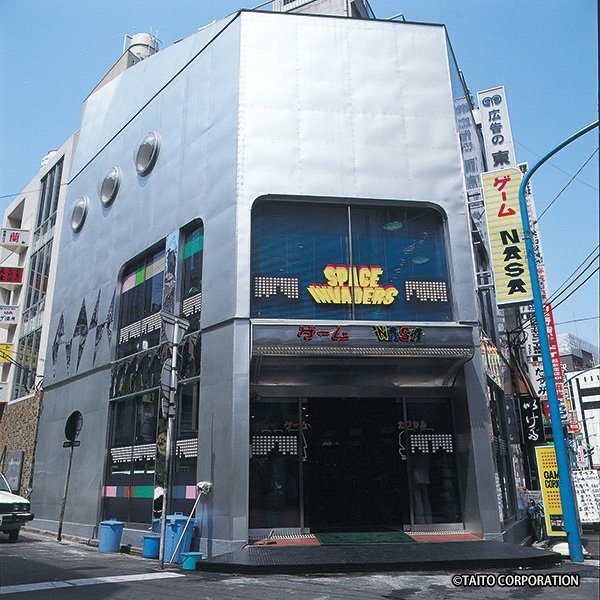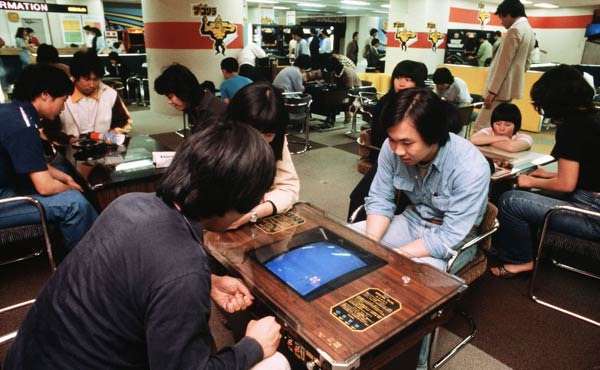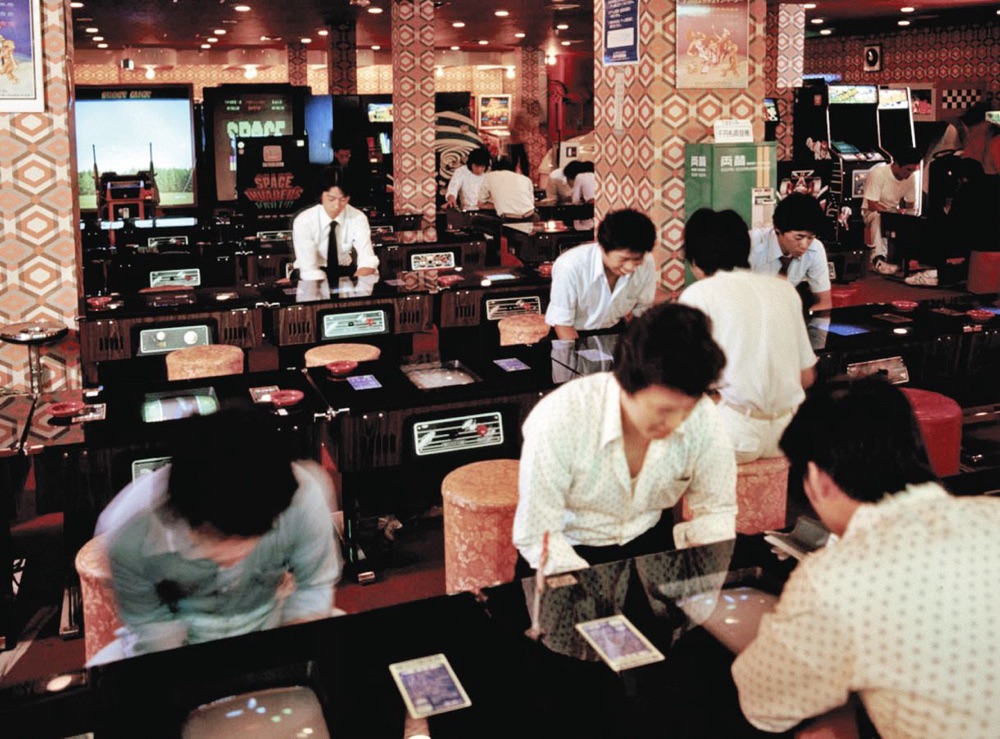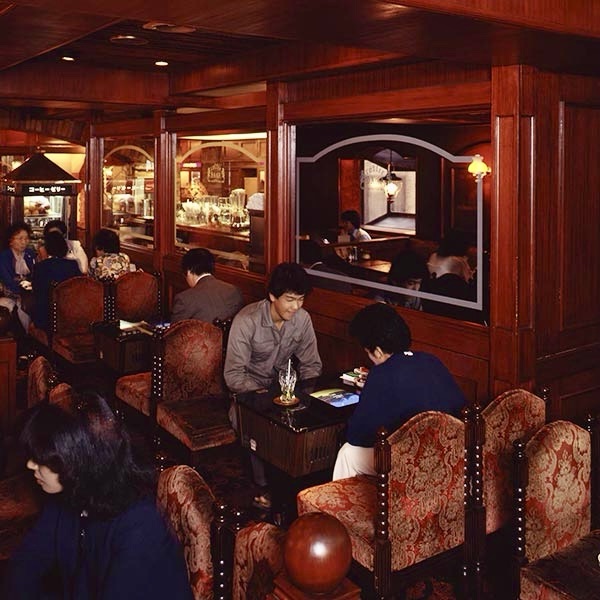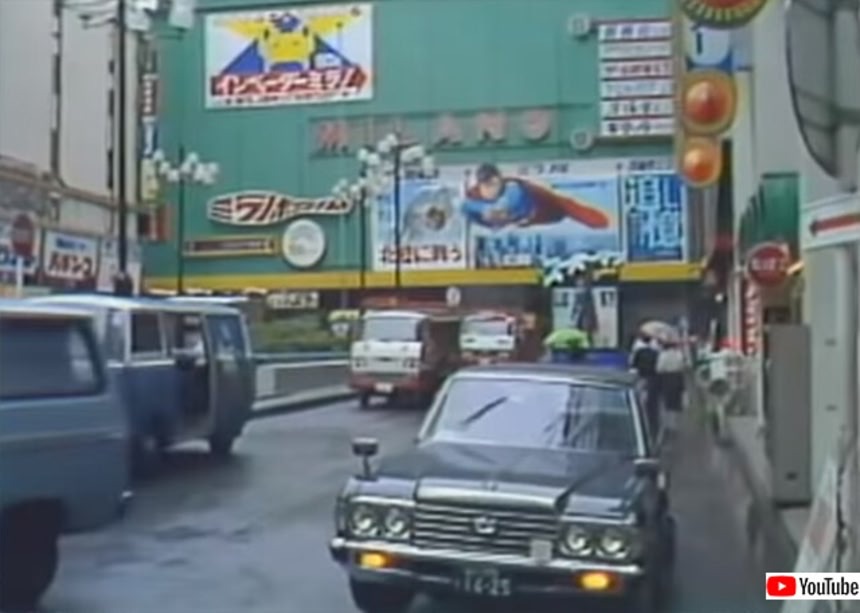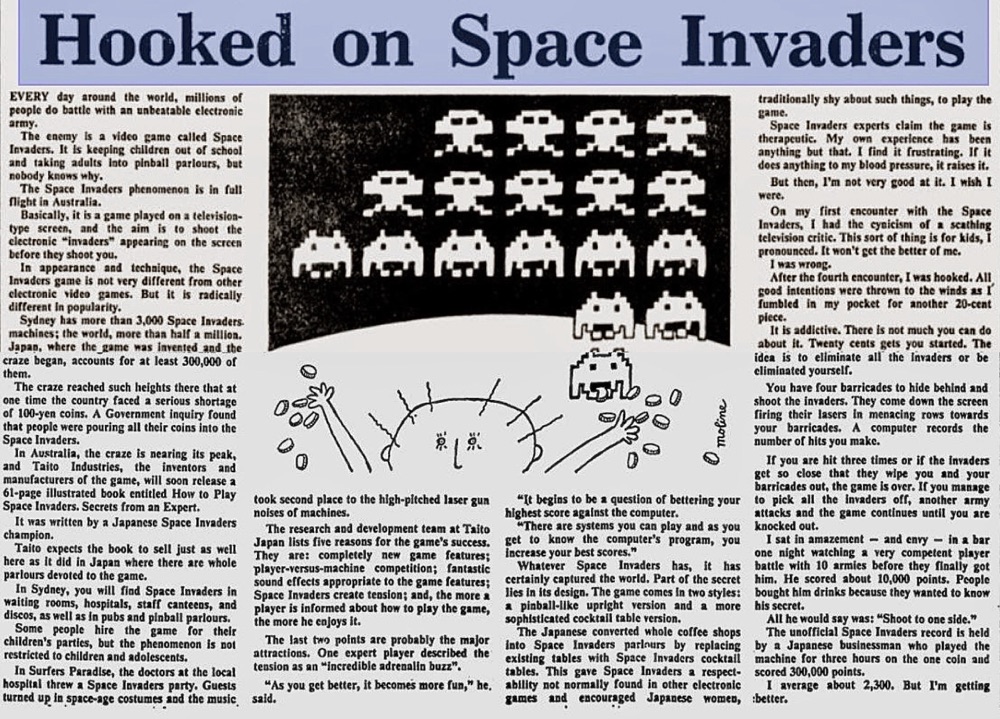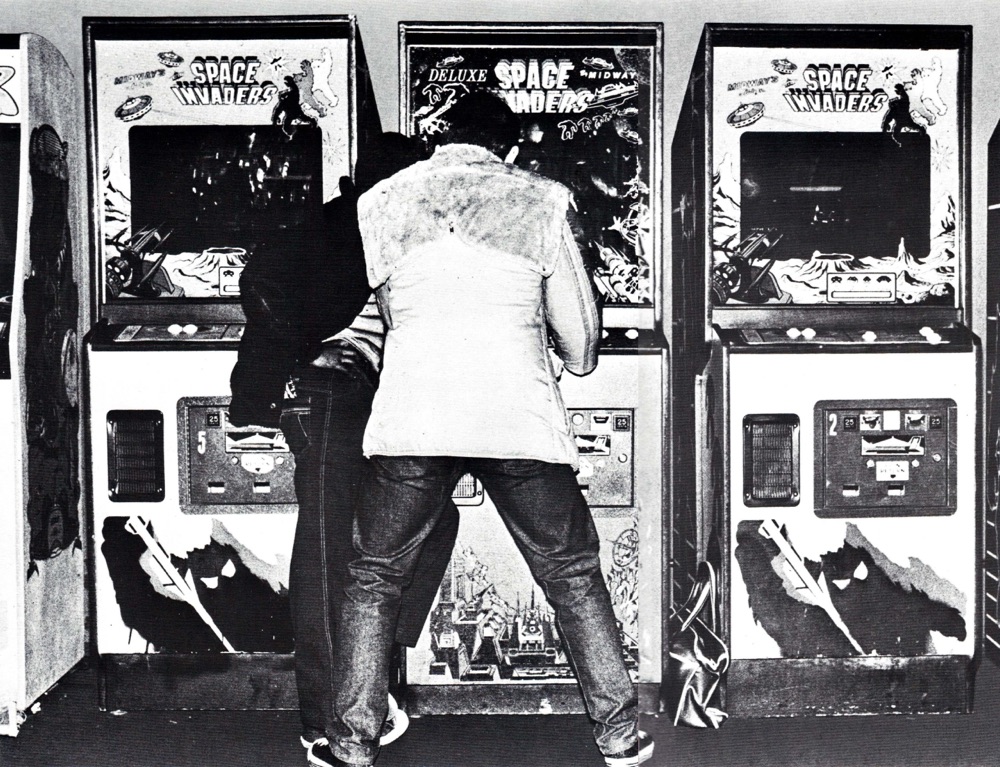A couple of decades ago there was a newspaper here called Weekly World News which was known for its absurd covers and often-fictional articles. This past summer we purchased a few old copies at a flea market. Let’s look at them:

Themes such as biblical prophecy, supernatural events or bizarre monsters often made the covers, and this one from December 1997 is typical. The article inside is a mundane piece quoting a ‘biblical prophecy expert’ that doesn’t live up to the hype of the cover.

This story is more like it. We found – in the three issues we had – that stories about teens doing crazy things were very common. Sometimes they involve crimes, often death. The wildest was one about teenagers inflating themselves with compressed air until they exploded!
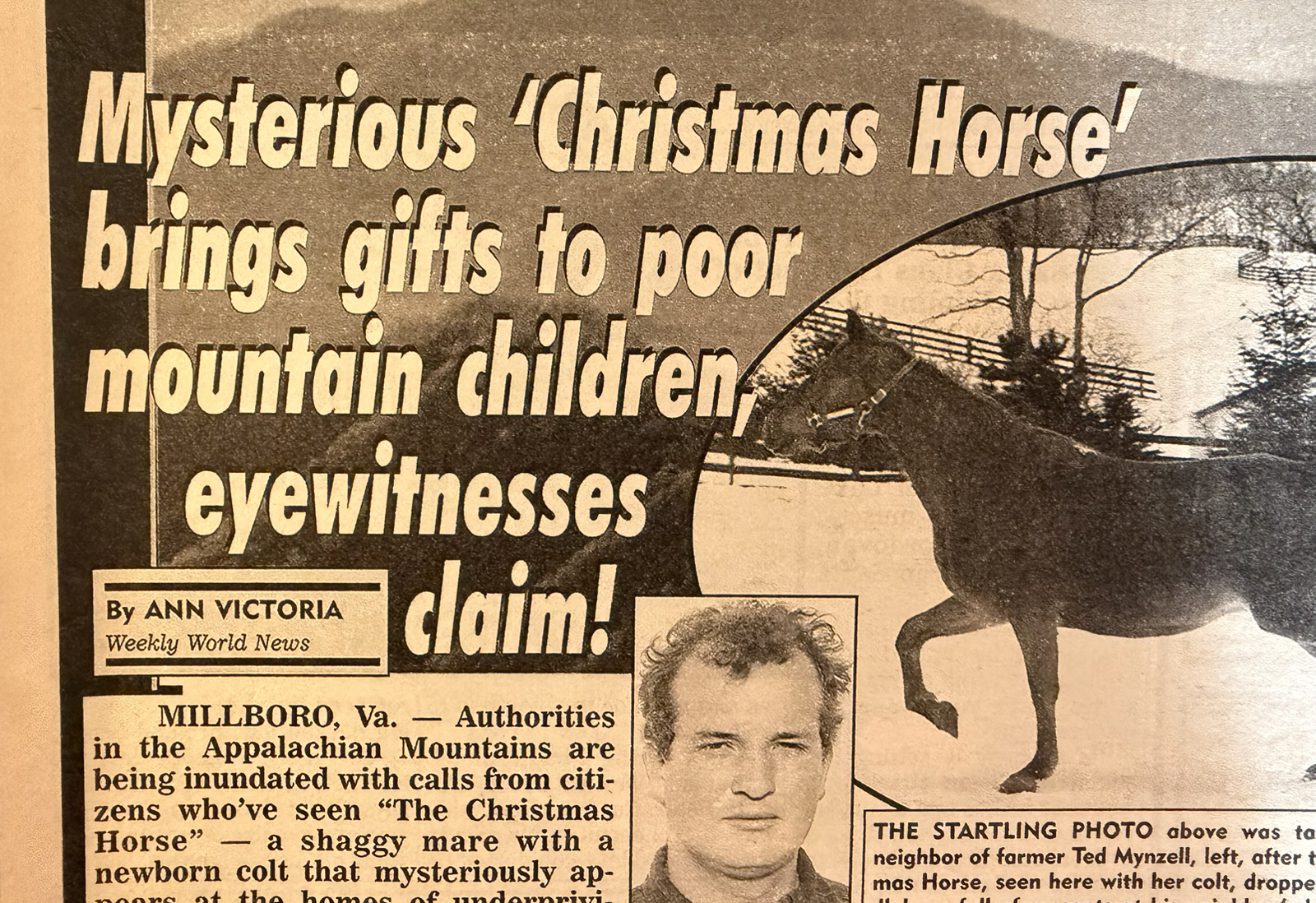
This seemed to be a Christmas issue, and there were a lot of stories about Santa and Jesus. The strangest was this one about a (supernatural?) horse that delivered gifts to poor children in the Appalachians. As you can see, it even has a photo of said horse.
The newspaper was ubiquitous on supermarket magazine stands for about three decades, reaching the height of its popularity in the 1990s before ending publication in 2007 (it continues as a blank website today). Initially most of its stories were factual, largely lifted from the pages of local newspapers from around the world, but as the years went by the magazine began to sneak in more and more outlandish content until that’s what it became known for.
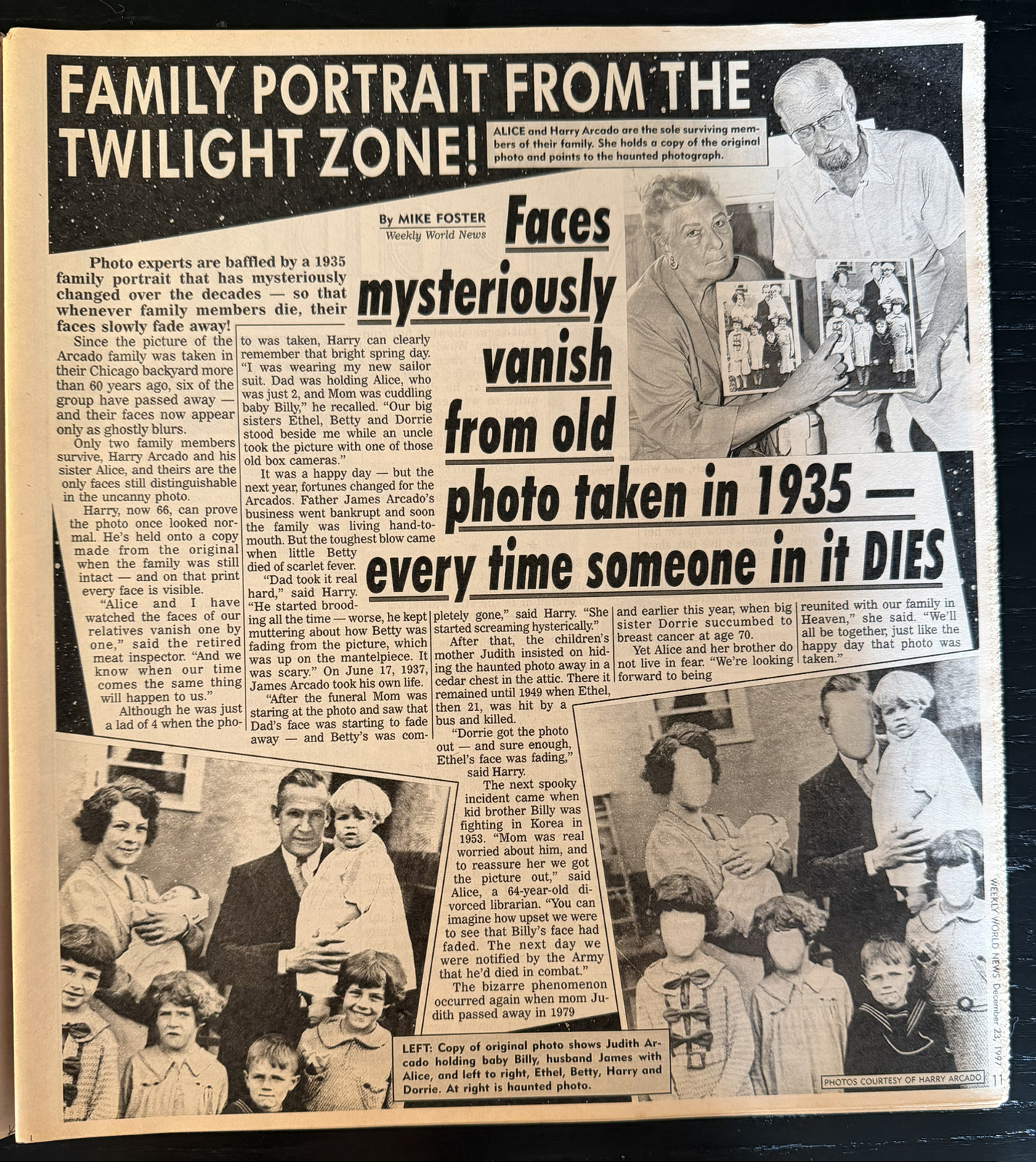
The above is an example of the sort of nonsense they’d be printing by the late 1990s. Much of this was supernatural, and even in the three we have stories of ghosts and hauntings are common. By the end of the 1990s they even had recurring stories about the (now infamous) ‘Bat Boy’, an extraterrestrial (named P’lod) that influenced the US government, Elvis sightings, Satan and even mermaids.
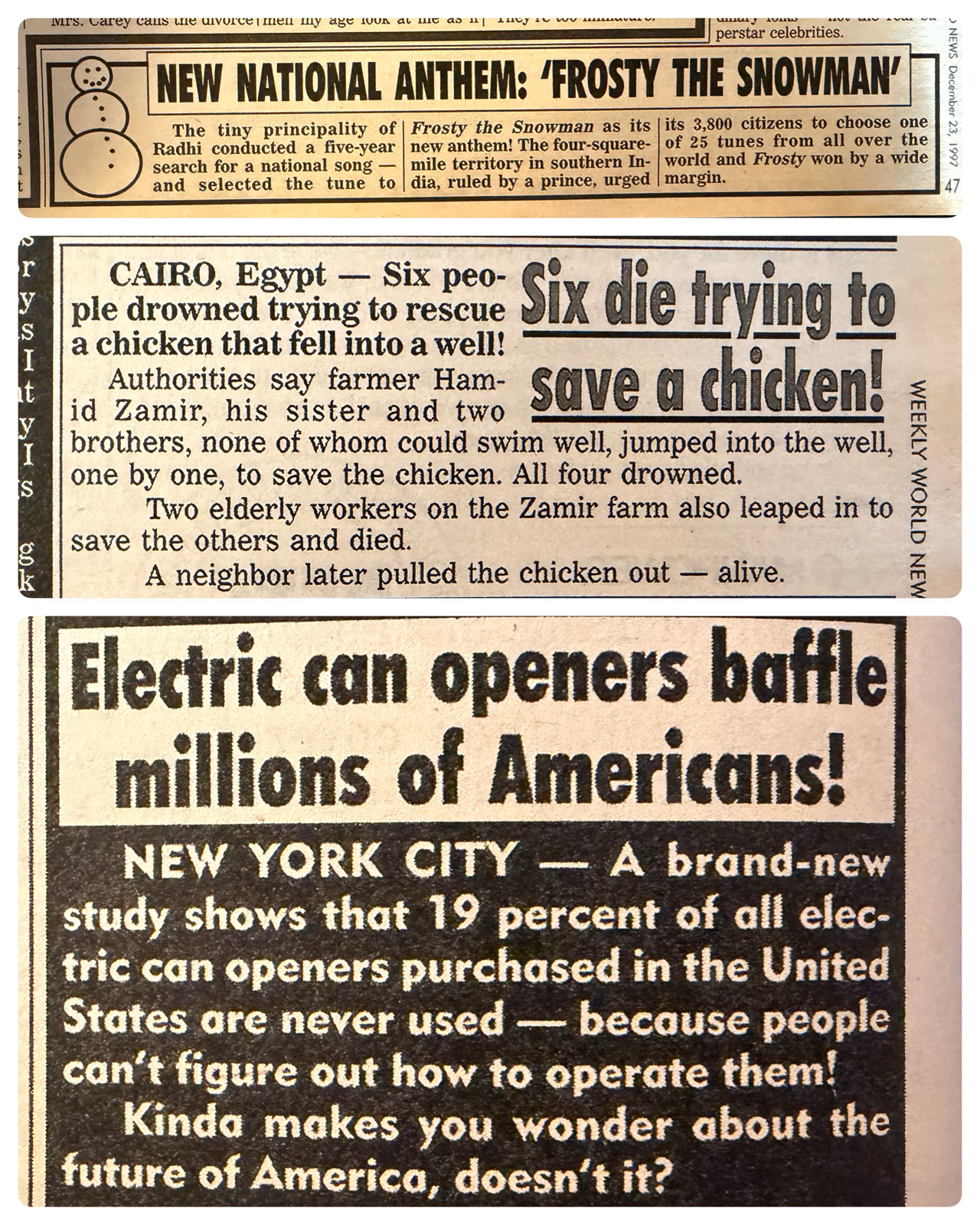
The pages are riddled with smaller stories too, and these have common threads as well, such as weird deaths, outlandish crimes or government waste. These almost never have attribution or bylines, and I imagine were made up wholesale to fill available space.

Here’s the cover of the second issue we bought, from early 1998. The story is as insane as it looks, and yes they do claim entire living headless human clones were being grown for organs. I have to say the Photoshop (?) work on the cover picture (which is repeated in the two-page article) is better than much of their examples.
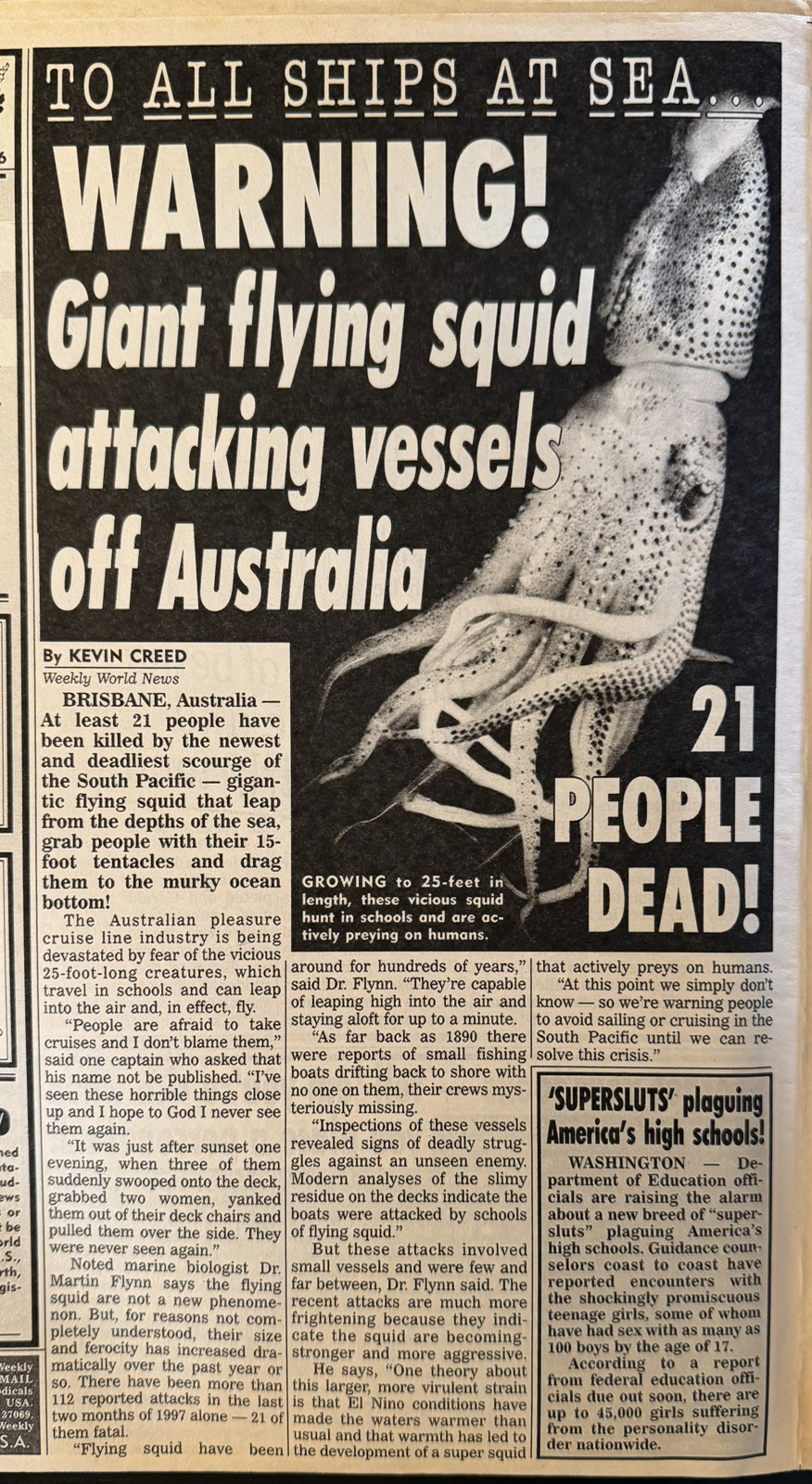
One common element of the crazy stories is that they occurred somewhere that would be exotic to most Americans (of the time). Very often, this was Australia, as with this example above. I love the mention of ‘the Australian pleasure cruise line industry‘! While absurd, the stories contains elements that a non-critical reader could convince themselves were real, such as using the name of a real animal (the flying squid) or using real scientific terms (El Nino).
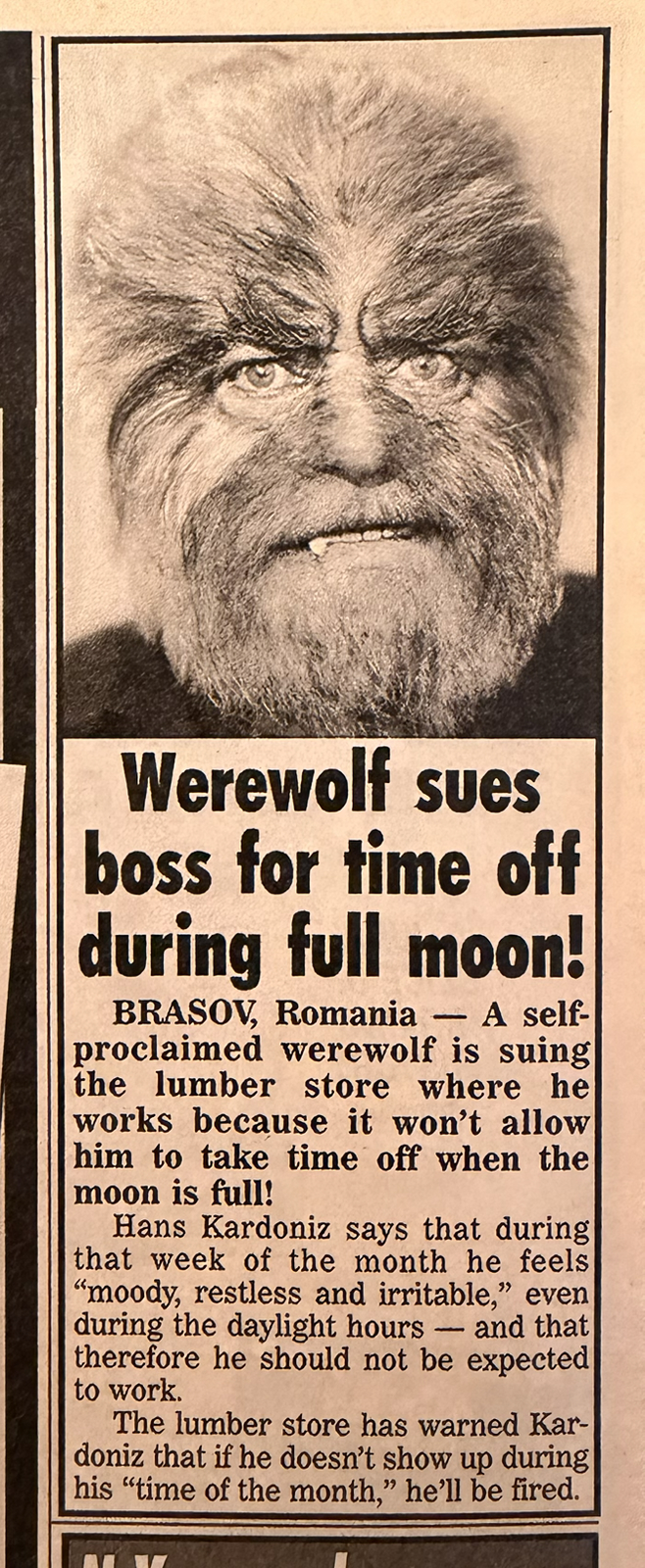
Decades ago, you may recall, I worked for a few years in a grocery store. We sold Weekly World News at the checkout lanes, and I initially dismissed it as one of those hard-to-explain ‘American’ oddities, mostly because I found the stories too ludicrous to be believed but not well-written enough to be funny.
One issue once reported on some ludicrous event (or crime?) in the city we were then living, and the girls that worked in the customer service center came into the office one night to tell us about a customer who had claimed she knew the people involved in the obviously fake story. I’m sure that many other (elderly, I assume) readers took much of the nonsense at face value as well, and it’s a little disturbing to think the effect this rag – filled with shocking crimes, actual interactions with Satan and doom-laden prophecies – may have had on some of its more gullible readers.
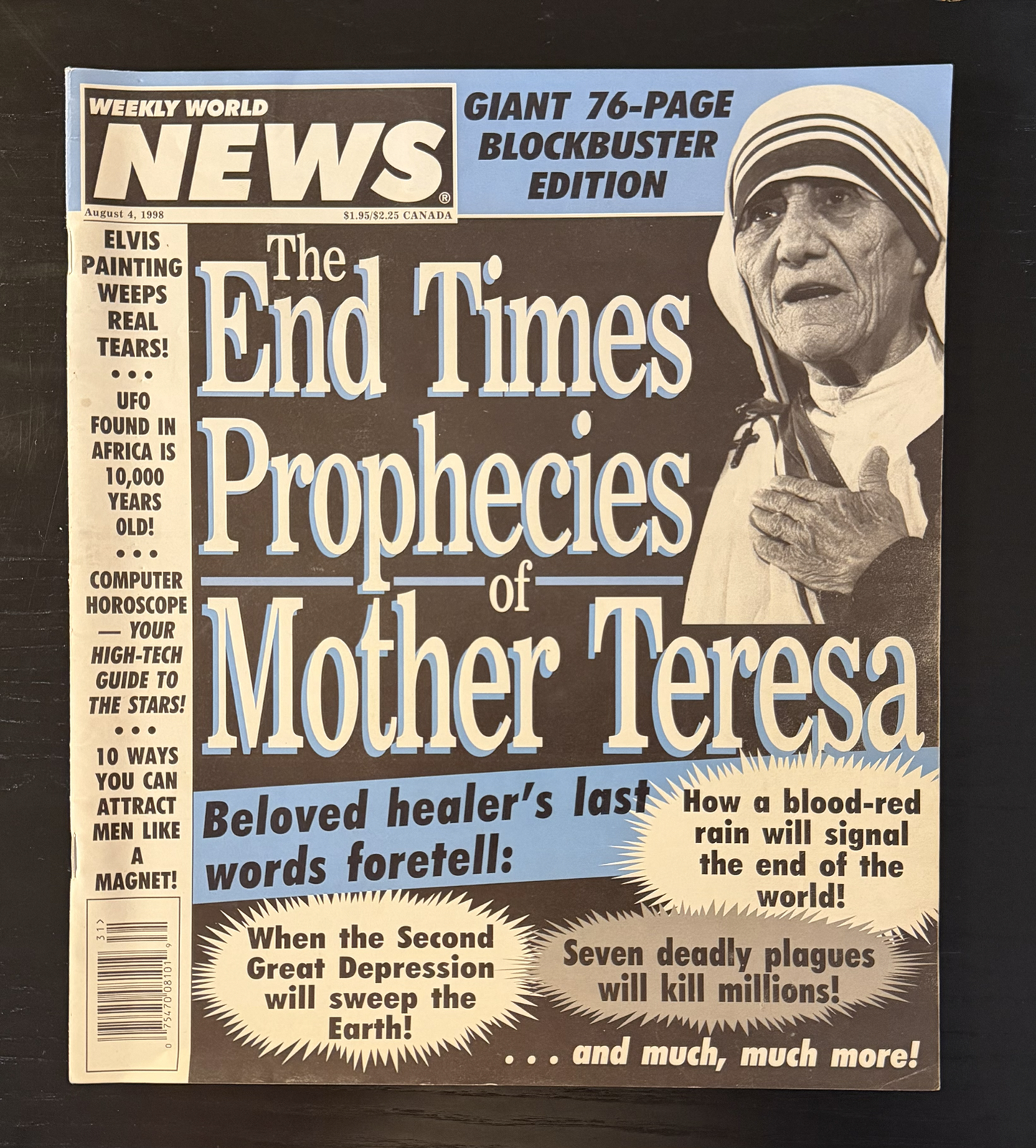
The third issue we bought, also from 1998, has as its cover story a silly piece about nonexistent prophecies penned by Mother Teresa. It also has a story about a recent discovery of three more Commandments (given to Moses) and another about how to communicate with your guardian angel. This issue seemed to double down on religious content.
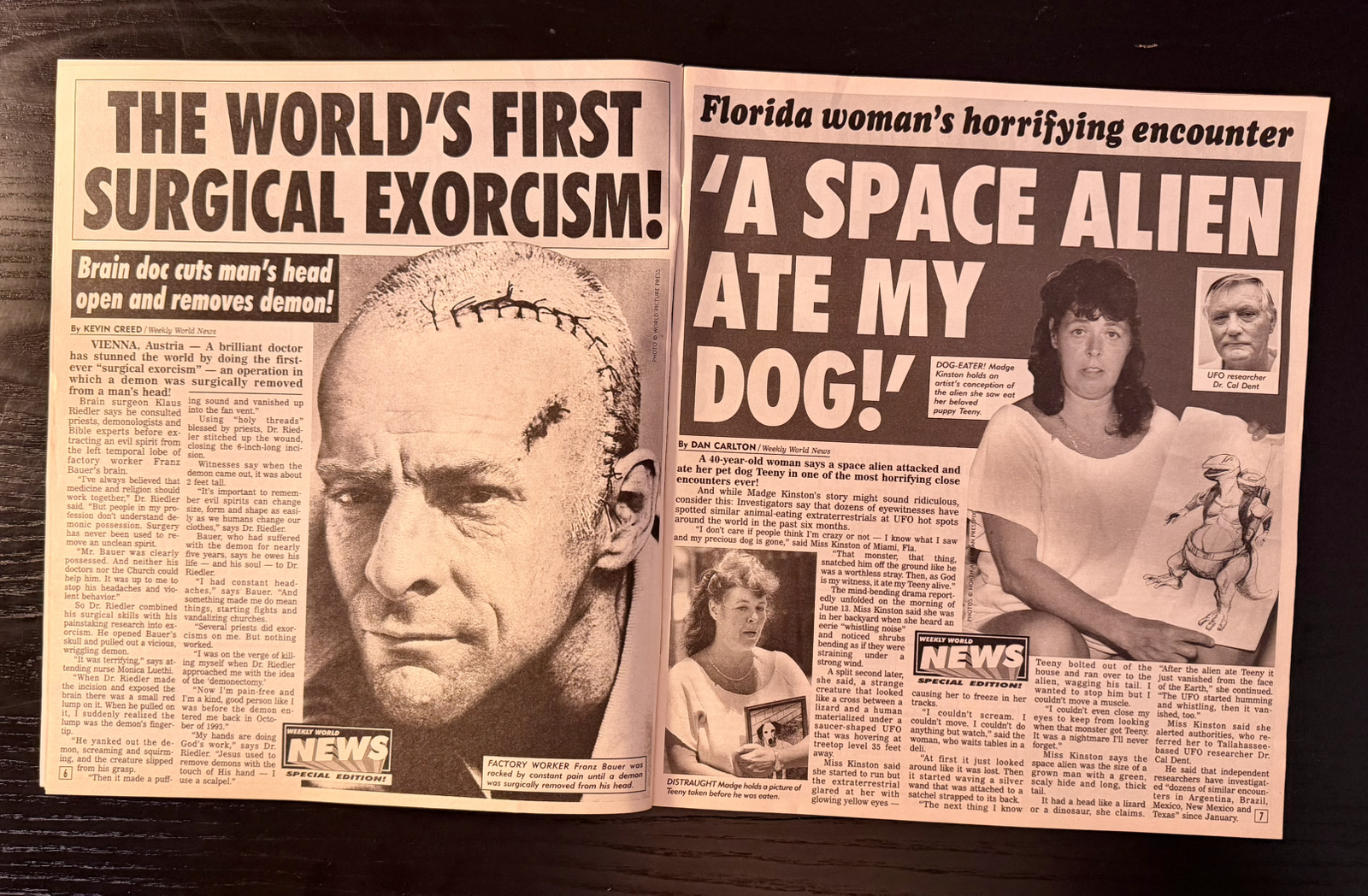
It also has this two-page spread, and the tale of a two-foot demon being surgically removed from a man’s brain is surely the most ridiculous one in any of these three issues.
As I said my opinion of this newspaper was never very high, but after looking through these three issues it’s taken a nosedive. Weekly World News competed with two right-wing newspapers also sold in aisle checkouts – The Sun and The National Enquirer – and for all it’s facile content it’s clear to see this newspaper also propagandized to its readers in ways perhaps more subtle than it’s competitors.

Take the above for example, a lavish two-page advertisement article purportedly penned by none other than Billy Graham. This is nothing less than proselytization, and given the abundance of fanciful stories based on religious myth it’s unusual that they would run this piece which I imagine the author didn’t want the reader to dismiss as nonsense.
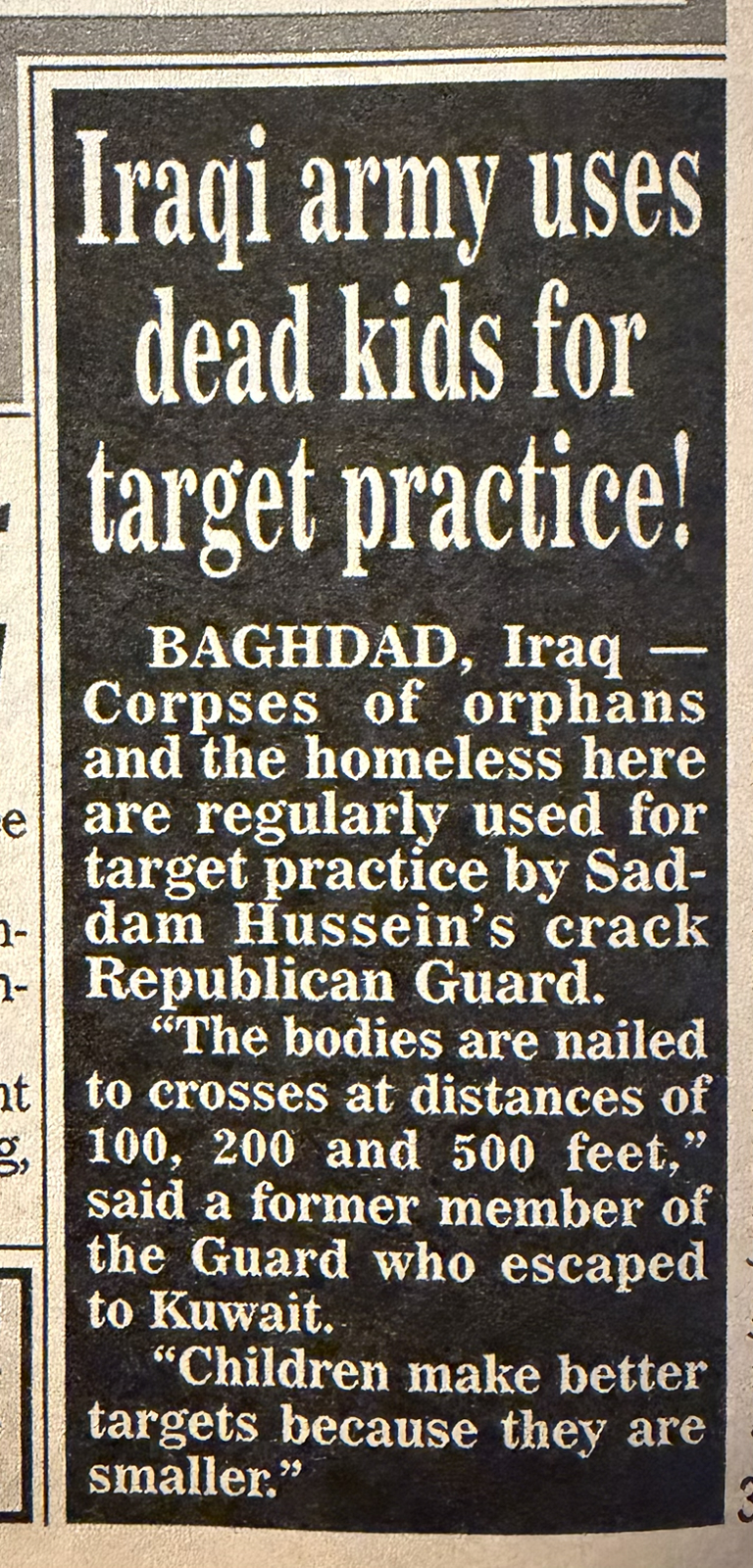
There was also in each of three issues at least one story demonizing Iraq, such as this piece of fiction above. This was in the period between the Gulf Wars, and a time in which Iraq in particular but also the Middle East in general was often the boogeyman in populist media. Every story about the region in these three issues was strongly negative, largely painting the residents as criminals or fools.
There were also stories in each issue either lightly making fun of women in general (such as housewives being lazy) or misogynistic, including a frankly offensive piece about women marrying their rapists. These stories were not meant as humor, seemed out-of-place compared to the rest of the newspaper, and blatantly reinforced ugly stereotypes. These stories – and the presence of a ‘page 5 bikini girl’ -made me wonder who actually bought this newspaper in its heyday.
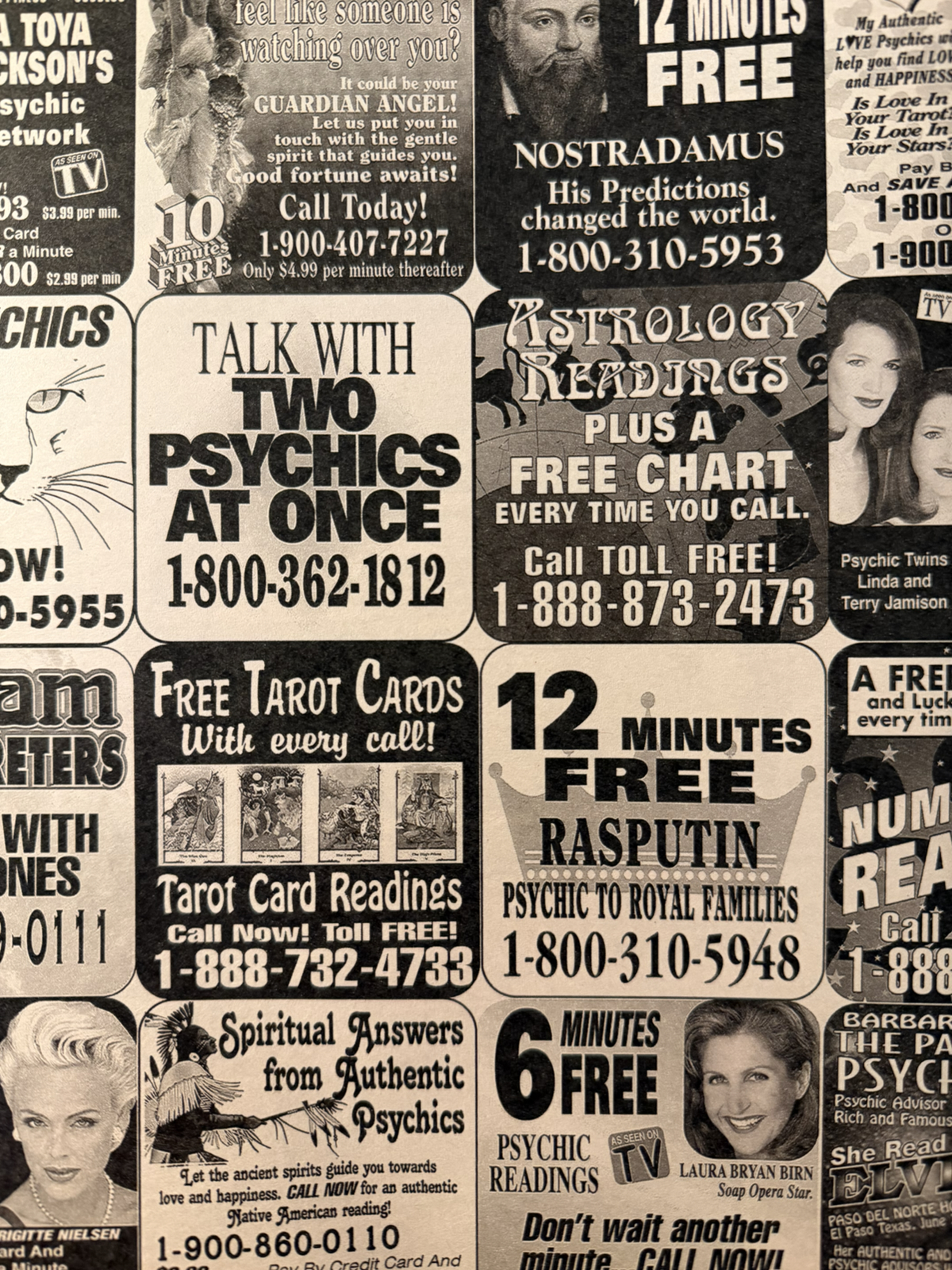
Looking at the adverts, most of them are for psychics or psychic-adjacent companies (such as books on becoming a psychic). This is all trash and lies of course, and I’m sure these companies happily took money from readers who weren’t savvy enough to realize they were being had.
There was of course a psychic helper page in the newspaper as well, in which (real?) letters from readers were answered by the ‘staff psychic’.
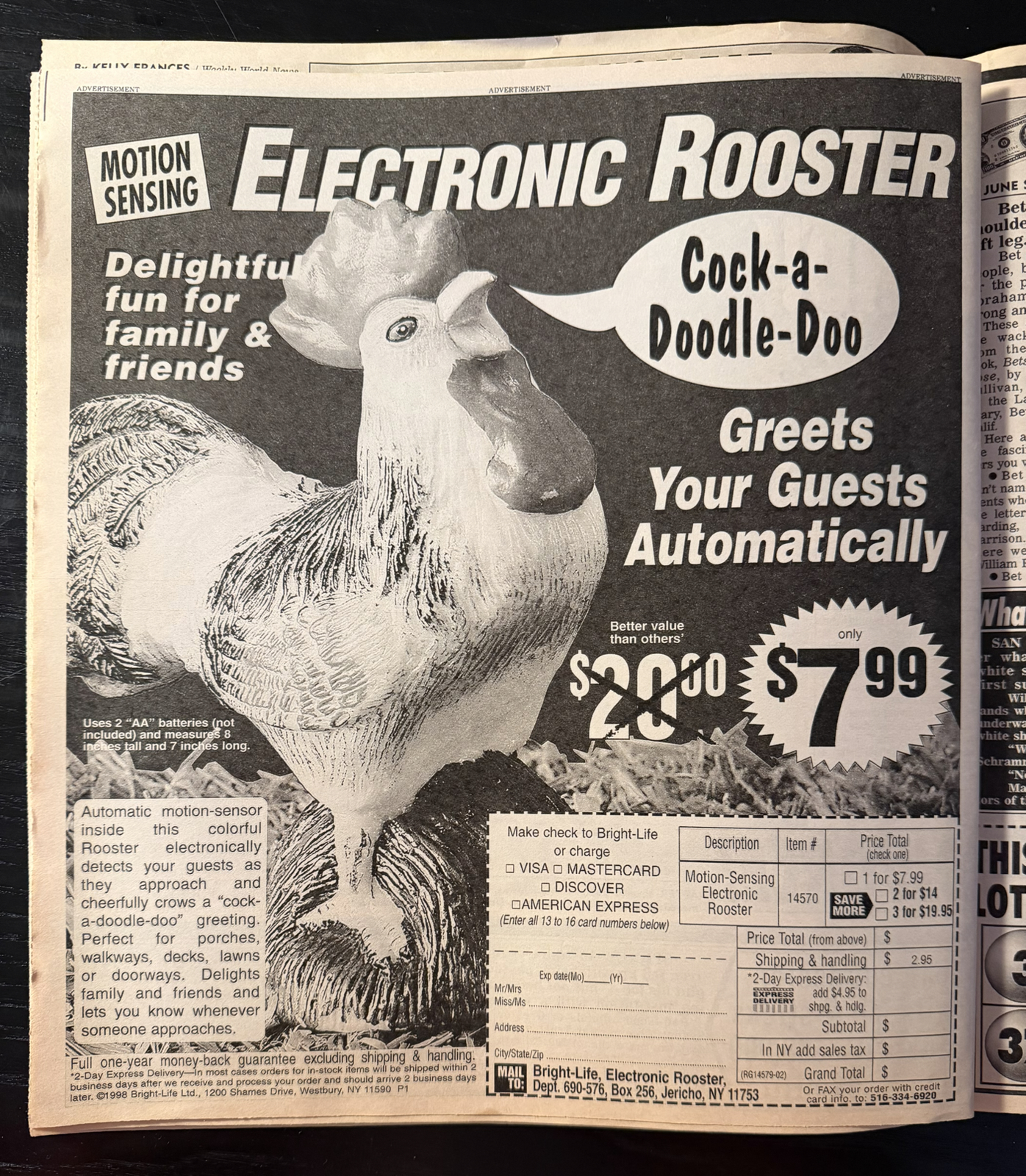
You could also buy a motion-sensing electronic rooster for the bargain price of $7.99 (plus $2.95 shipping). This looks positively awful, and it’s hard to believe anyone thought it worth buying even in 1998? If you disagree there’s one on eBay right now for only $34 (and $8 shipping):
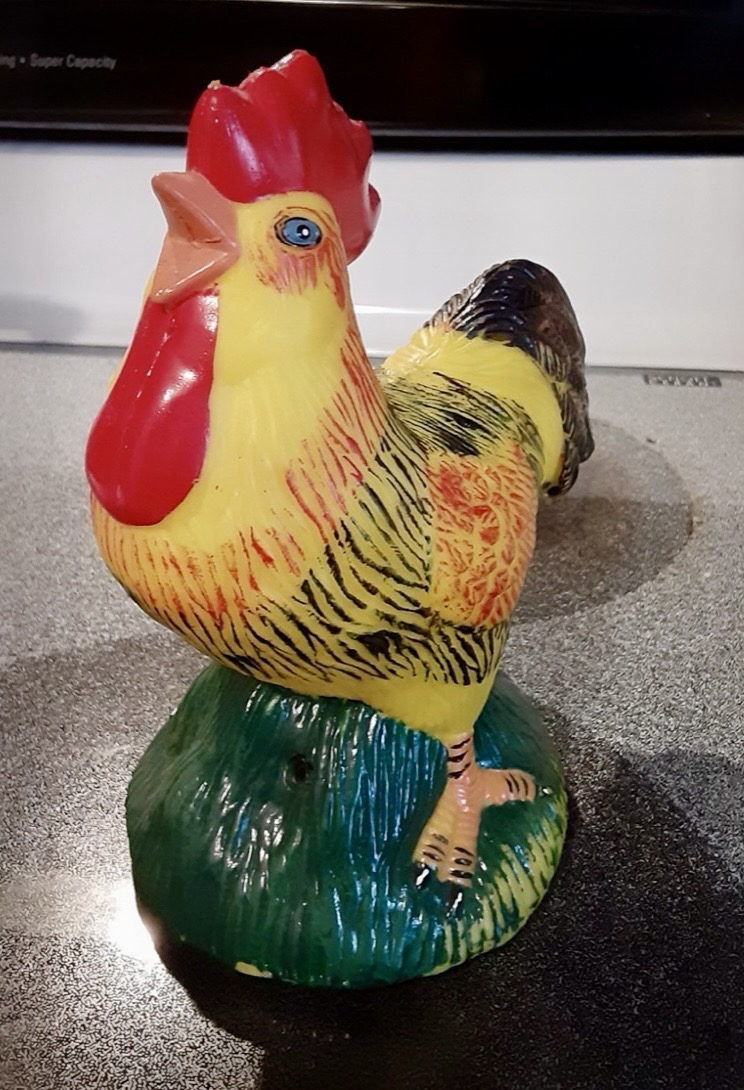
So what’s my final thoughts on this rag? I think, in retrospect, it makes me a little sad. I assume the vast majority bought it for a laugh and had the smarts to either ignore or not be influenced by the unpleasant stuff, but at the same time there would also have been readers less critical who may also have purchased it for a laugh but unknowingly may have ended up with the editorial affecting them in a negative way.
This was before the internet made its way into everyone’s home and long before social media. Things are of course much worse now, and I’ll remember this ‘harmless’ piece of tabloid trash as a blueprint for the sort of content uncritically absorbed on social media today.
